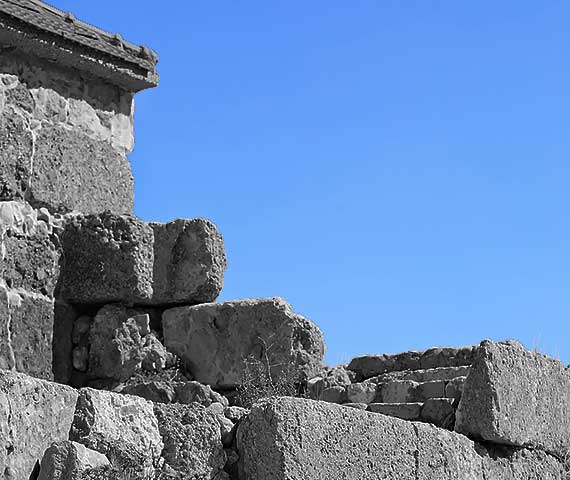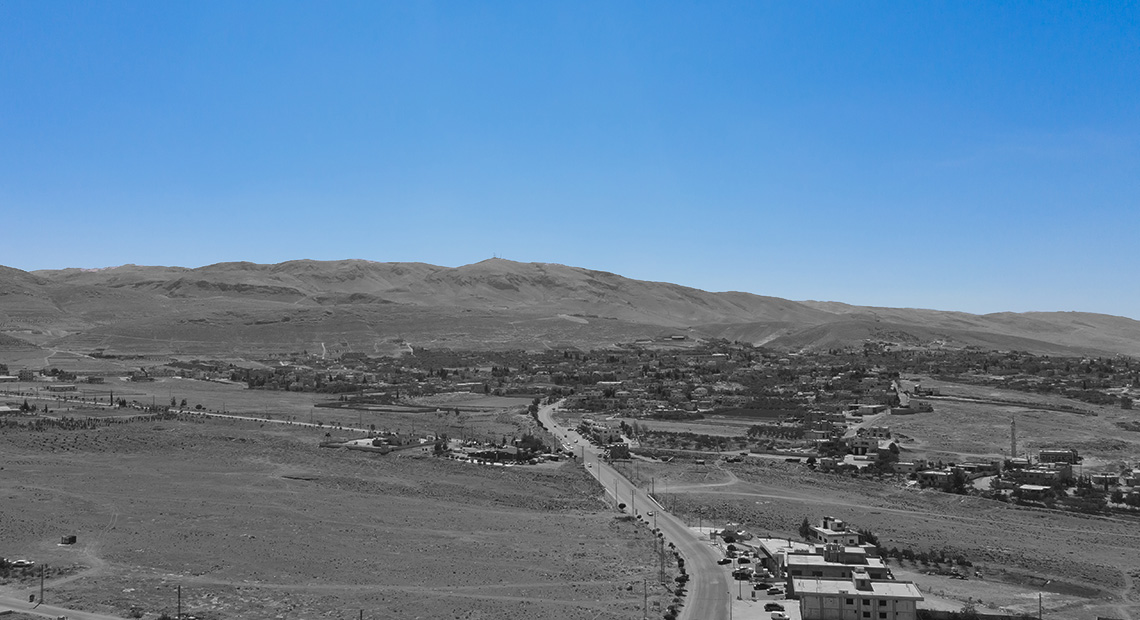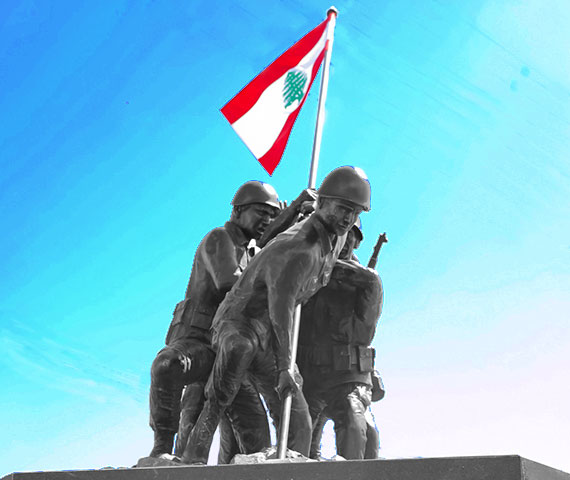
Ras Baalbeck Thourgh History
Ras Baalbeck Thourgh History
It is the town of Roman temples, Byzantine churches and monuments that stand witness to the first man to ever live in Ras Baalbeck in the 14th century BC.
Ras Baalbeck holds between the folds of its history book a rich journey of different civilization eras that made it the town of resilience and steadfastness. This journey started around 6,000 years BC when Ras Baalbeck was founded around one of its springs, Al-Hassib spring. It endured wars and attacks because it was located on the passage line of armies and commercial fleets.
Christianity was introduced to Ras Baalbeck between years 120 and 180 and during the Byzantine era, considered the golden age of the town, it had a population of 20,000 citizens and included around 20 churches, most of them was pagan temples.
At the end of the 19th century, the town recognized an exodus to internal cities and a wave of immigration to South America, which led to a decrease in its population.
During the second half of the 20th century, it played a major political role in the region. Its citizens became affiliated in the military and took jobs in the government, so the exodus wave receded. Its citizens excelled in scientific, artistic, archeology and literature fields.
Ras Baalbeck On The Map
Ras Baalbeck is located at the foothills of the eastern mountain range of Lebanon, adjacent to the Syrian borders in the district of Baalbek, which is 45 km away from it. 130 km separate it from the capital Beirut and is 950 m above sea level. It spreads over 170 km2.
On the map of Lebanon, the town is located at the top of northern Bekaa, at the foothills of the eastern mountain range of Lebanon. From the East, its borders reach Qara town in Syria, from the South and South-East, it borders the Lebanese Faqha and Aarsal towns, from the North it borders Al-Qaa town and from the North-East it borders the Mar Maroun area till Al-Raheb cave. From the West, it borders Wadi Faara and a part of Bcharre.

Ras Baalbeck On The Map

Main Characteristics Of Ras Baalbeck
Main Characteristics Of Ras Baalbeck
Ras Baalbeck is rich in heritage and history. It is famous for its caves that contain monuments and carvings proving that the first man lived in its caves 14,000 years ago (Al-Tamayor cave).
The town is famous for its citizens who were described as “lions”, so it was known also as the “town of lions”. They are resolute and courageous, and combine both strength and good heart due to the wars and attacks the town has endured. They participated in building Baalbek’s colossal structures and the proof was carved on a stone manuscript mentioning that the sons of “Kouna” (Ras Baalbeck) helped in building the structures.
Despite their stiff and strong bodies, Ras Baalbeck citizens are welcoming, loving and promoters of coexistence with other people. They are generous, hardworking and welcoming to all people who visit the town during holidays.
As for its nature aspect, Ras Baalbeck located in the Bekaa is known for its sweet grapes from which the best products are made. Vineyards are abundant in the town because the soil and weather are compatible with this specific agriculture. It is known that Ras Baalbeck produces the tastiest grapes, used to prepare pantry products.
Ras Baalbeck Thourgh History
It is the town of Roman temples, Byzantine churches and monuments that stand witness to the first man to ever live in Ras Baalbeck in the 14th century BC.
Ras Baalbeck holds between the folds of its history book a rich journey of different civilization eras that made it the town of resilience and steadfastness. This journey started around 6,000 years BC when Ras Baalbeck was founded around one of its springs, Al-Hassib spring. It endured wars and attacks because it was located on the passage line of armies and commercial fleets.
Christianity was introduced to Ras Baalbeck between years 120 and 180 and during the Byzantine era, considered the golden age of the town, it had a population of 20,000 citizens and included around 20 churches, most of them was pagan temples.
At the end of the 19th century, the town recognized an exodus to internal cities and a wave of immigration to South America, which led to a decrease in its population.
During the second half of the 20th century, it played a major political role in the region. Its citizens became affiliated in the military and took jobs in the government, so the exodus wave receded. Its citizens excelled in scientific, artistic, archeology and literature fields.

Ras Baalbeck On The Map
Ras Baalbeck is located at the foothills of the eastern mountain range of Lebanon, adjacent to the Syrian borders in the district of Baalbek, which is 45 km away from it. 130 km separate it from the capital Beirut and is 950 m above sea level. It spreads over 170 km2.
On the map of Lebanon, the town is located at the top of northern Bekaa, at the foothills of the eastern mountain range of Lebanon. From the East, its borders reach Qara town in Syria, from the South and South-East, it borders the Lebanese Faqha and Aarsal towns, from the North it borders Al-Qaa town and from the North-East it borders the Mar Maroun area till Al-Raheb cave. From the West, it borders Wadi Faara and a part of Bcharre.

Main Characteristics Of Ras Baalbeck
Ras Baalbeck is rich in heritage and history. It is famous for its caves that contain monuments and carvings proving that the first man lived in its caves 14,000 years ago (Al-Tamayor cave).
The town is famous for its citizens who were described as “lions”, so it was known also as the “town of lions”. They are resolute and courageous, and combine both strength and good heart due to the wars and attacks the town has endured. They participated in building Baalbek’s colossal structures and the proof was carved on a stone manuscript mentioning that the sons of “Kouna” (Ras Baalbeck) helped in building the structures.
Despite their stiff and strong bodies, Ras Baalbeck citizens are welcoming, loving and promoters of coexistence with other people. They are generous, hardworking and welcoming to all people who visit the town during holidays.
As for its nature aspect, Ras Baalbeck located in the Bekaa is known for its sweet grapes from which the best products are made. Vineyards are abundant in the town because the soil and weather are compatible with this specific agriculture. It is known that Ras Baalbeck produces the tastiest grapes, used to prepare pantry products.



